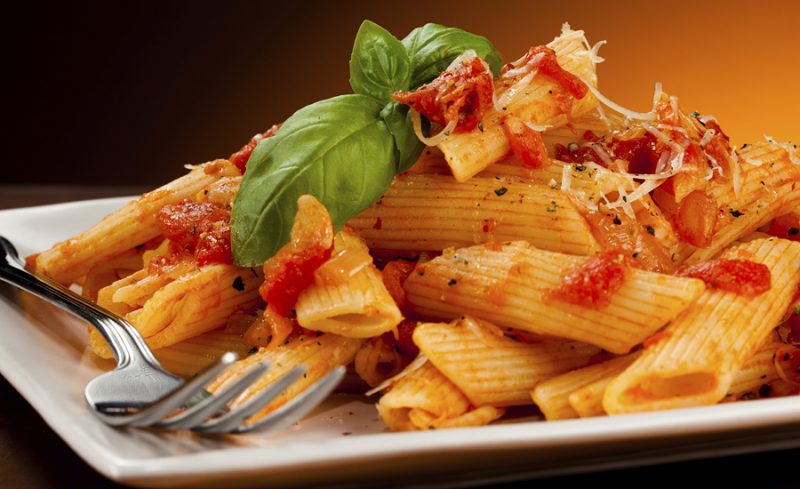Quick Answer: Pizza crust and pizza dough are often used interchangeably, but there is a subtle difference between the two. Pizza crust is the cooked and topped part of the pizza, while pizza dough is the uncooked base that is used to make pizza crust.
When it comes to the delightful world of pizza, it’s easy to get caught up in the lingo. Pizza crust and pizza dough are two terms that are often thrown around casually, but let’s uncover the subtle yet significant difference between these two culinary essentials.
Pizza Dough: The Unbaked Canvas
Pizza dough is the foundation of every great pizza. It’s an artful blend of flour, water, yeast, salt, and sometimes a dash of oil. But here’s the kicker: pizza dough isn’t just any bread dough. It’s meticulously crafted to be thin, crispy, and poised for pizza perfection.
Pizza Crust: The Baked Masterpiece
Now, pizza crust is the showstopper on your plate. It’s the result of the alchemical transformation that takes place in a hot oven. The pizza dough, having been adorned with sauce, cheese, and an array of tantalizing toppings, emerges as the beautifully baked pizza crust, ready to steal the spotlight.
Key Difference
Let’s delve into the details that set them apart:
1. Texture: Pizza crust reigns with its chewy, crispy charm. It achieves this exquisiteness by basking in the oven’s warmth for an extended period. Pizza dough, in contrast, maintains a tender and less chewy disposition, awaiting its destiny.
2. Flavor: Pizza crust boasts a symphony of flavors. As it bakes, it absorbs the essence of the sauce, the richness of the cheese, and the character of its toppings. Pizza dough, on the other hand, is a blank canvas with a more neutral flavor, a potential waiting to be unlocked.
3. Versatility: Pizza crust, loyal to its name, is primarily the star of the show when it comes to crafting pizzas. But pizza dough is the versatile virtuoso. Beyond pizzas, it plays a leading role in creating calzones, strombolis, and a plethora of other delectable dishes.
The Different Types of Pizza Crust
There’s a pizza crust for every taste bud, each with its own unique flavor and texture. Let’s take a delicious tour of some of the most popular types:
- New York-style Crust: This thin, crispy delight comes with a chewy interior. Crafted from high-gluten flour and proofed briefly, it’s then baked in a hot oven. A true classic.
- Chicago-style Deep-Dish Crust: The Windy City’s contribution to pizza lore, this one’s thick and doughy with a crispy bottom crust. It’s made from a high-fat dough and proofed patiently before being baked in a deep dish pan. Deep flavor, deep satisfaction.
- Neapolitan-style Crust: Hailing from Naples, Italy, this crust is thin and slightly charred, with a soft, fluffy interior. High-protein flour and a short proofing period make it the perfect match for a wood-fired oven. It’s simplicity at its finest.
So, next time you’re savoring that mouthwatering slice of pizza, remember that it all begins with the humble pizza dough, and the magic happens when it transforms into the irresistible pizza crust. It’s a culinary journey that’s as distinct as it is delicious.
The Art of Making Pizza Dough
Pizza dough is more than just a mix of ingredients; it’s a canvas for culinary creativity. Crafting the perfect pizza dough is an art, and mastering it is the first step to creating a memorable pizza experience. Here’s a glimpse into the world of pizza dough wizardry.
- Ingredients: Begin with high-quality flour, water, yeast, salt, and perhaps a touch of oil. The choice of flour and water quality can significantly influence the dough’s texture and flavor. Active dry yeast or fresh yeast can lend different characteristics, and a pinch of salt adds depth to the taste. A dash of olive oil can introduce a subtle richness.
- Mixing: The right consistency is key. Combine the ingredients, kneading until the dough becomes smooth and elastic. This process activates the gluten and develops the dough’s structure.
- Rising: Allow the dough to rise, during which the yeast works its magic. The dough should double in size, gaining lightness and a pleasing, airy texture.
- Shaping: Once risen, it’s time to shape the dough. Whether you’re aiming for a traditional round or an adventurous shape, gentle hands are crucial.
- Resting: A brief rest allows the dough to relax, making it easier to stretch or roll out. It’s a crucial step in achieving that thin, crispy texture.
Mastering the art of pizza dough takes time and practice. Every step, from ingredient selection to the final bake, contributes to the flavor and texture of your pizza.
How Pizza Dough Becomes a Crust
The transformation of pizza dough into a mouthwatering pizza crust is a journey filled with skill and culinary finesse. Here, we’ll take you through the remarkable process, from the initial dough to that delectable final product.
1. Shaping the Dough: After the dough has been meticulously prepared, it’s time to shape it. Traditionally, this involves rolling, stretching, or tossing the dough into the desired shape. The art of pizza tossing, in particular, is an impressive display of skill, resulting in a perfectly thin and round canvas for toppings.
2. Sauce and Cheese: With the dough expertly shaped, the next step is to add the sauce. A ladle of rich tomato sauce is spread evenly over the surface, serving as the flavorful foundation of your pizza. Then comes a generous layer of shredded cheese, typically mozzarella, which will melt into a gooey, golden perfection during baking.
3. Toppings Galore: The real fun begins as you get creative with your toppings. From pepperoni and mushrooms to bell peppers and olives, this is your chance to make your pizza truly unique. Carefully arrange these toppings on the sauce and cheese, ensuring even distribution for a harmonious taste in every bite.
4. Into the Oven: The masterpiece is now ready for its final transformation. It’s gently placed into a hot oven, where the magic happens. The intense heat crisps up the edges of the dough, creating that delectable, slightly charred crust. Simultaneously, the cheese melts, bubbling and browning to perfection, while the toppings infuse their flavors into the whole creation.
As the aroma wafts through your kitchen, you’ll witness the culmination of your efforts, from dough to crust. The result is a perfect harmony of flavors and textures, with a crispy, chewy crust that serves as the ideal canvas for your pizza masterpiece.
In Conclusion
The journey from pizza dough to crust is a culinary adventure that combines tradition, artistry, and flavor. It’s a process that transforms humble ingredients into a delectable masterpiece. With the right dough, a dash of creativity, and a hot oven, you can craft a pizza that’s as unique as it is delicious. So, the next time you savor that perfect slice, remember the craftsmanship behind it, and celebrate the magic of pizza-making.
Frequently Asked Questions (FAQs)
How can I make my pizza crust extra crispy?
To achieve an extra crispy pizza crust, preheat your oven to its highest temperature. Use a pizza stone or an inverted baking sheet for even heat distribution. Roll your dough thinly, and avoid overloading it with toppings to maintain crispiness.
What’s the best flour to use for pizza dough?
The best flour for pizza dough is high-protein bread flour. It creates a strong gluten structure, giving your dough elasticity and a chewy texture, ideal for pizza crust.
Can I make gluten-free pizza dough?
Yes, you can make gluten-free pizza dough using gluten-free flour blends. These blends are available in most stores and can be used to create a delicious gluten-free pizza crust.
What’s the secret to getting a perfectly charred Neapolitan-style crust at home?
For that classic Neapolitan-style charred crust, use a wood-fired oven or a pizza stone in your regular oven, preheated to the highest temperature. Keep the pizza thin, and cook it briefly to achieve that sought-after char.
How long should I let my pizza dough rise for the best results?
The ideal rise time for pizza dough is about 1 to 2 hours at room temperature. This allows the dough to develop flavor and a desirable texture.
What’s the ideal oven temperature for baking a pizza crust?
Preheat your oven to the highest temperature it can reach, typically around 500°F (260°C), for a perfectly crispy pizza crust.
Can I freeze pizza dough, and if so, for how long?
Yes, you can freeze pizza dough. It can be stored in the freezer for up to three months, wrapped in plastic and placed in an airtight bag.
What’s the best way to reheat leftover pizza to maintain a crispy crust?
To reheat leftover pizza with a crispy crust, use a preheated oven or toaster oven instead of the microwave. This keeps the crust crunchy while reheating the toppings.


